Masoor Dal is healthy, quick, comfort food and arguably the tastiest way to make red lentils. You’re looking at the easiest, most flavourful red lentil curry recipe in 5 minutes hands-on time.
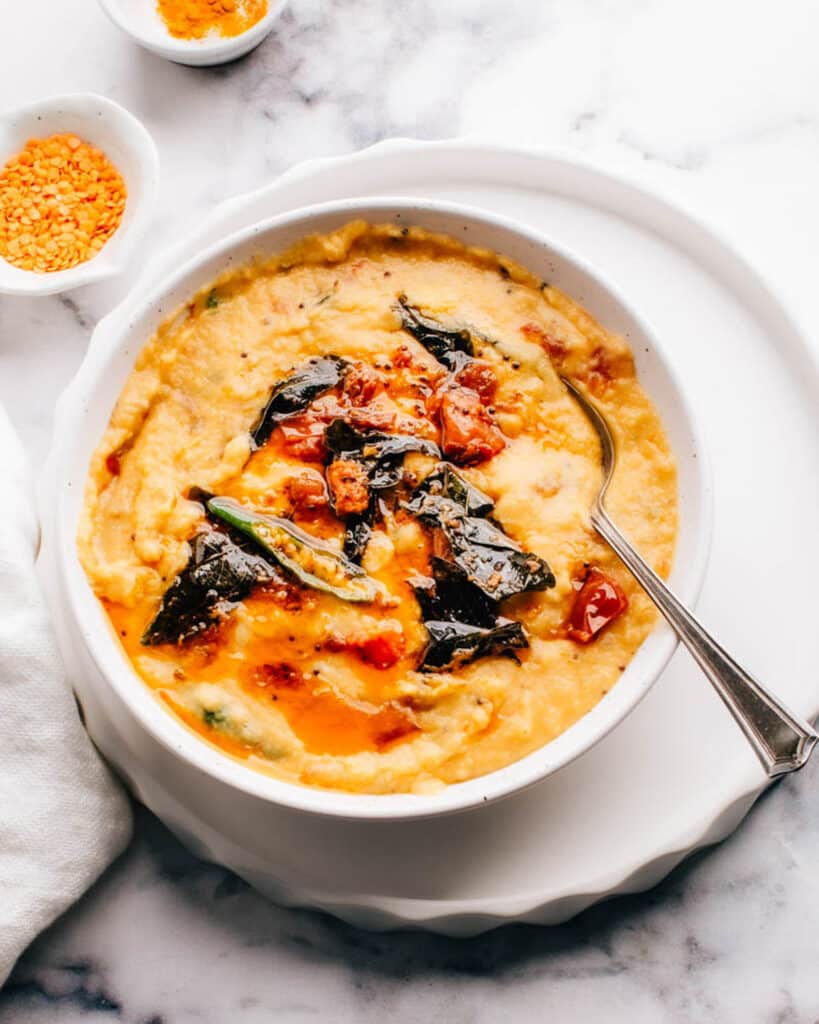
Table of Contents
- Masoor Dal:Why You’ll Love this Red Lentil Recipe
- Ingredients and Notes
- What is Masoor Dal Called in English?
- Whole Masoor Dal vs. Split Masoor Dal
- Grab these Tools
- How to Make Masoor Dal with Tadka
- How to Serve it
- Choose the Perfect Side Dishes
- FAQs
- Make Ahead and Storage Tips
- Other Popular Indian Recipes You Don’t Want to Miss
- Masoor Dal Recipe (Indian Red Lentil Curry) Recipe
Masoor Dal:Why You’ll Love this Red Lentil Recipe
My South Indian mother-in-law was cooking for us constantly during the months she spent here after the births our babies.
She is a fabulous cook, though when you compliment anything she makes, she says, “Oh Jenn, this is so simple!”. And she’s right, of course. Which is why you’ll love her mouthwatering Masoor Dal recipe as much as I do.
Here’s why you’ll fall in love:
- All you have to do is cook red lentils on the stovetop or in a pressure cooker while in a second small pan you heat oil to sauté the flavourings. This second part is called a “tadka”.
- Dal with tadka is easiest, most flavourful 5 minutes of actual effort you can hope for. It’s mostly hands-off cooking time, and you can whip it up in under an hour, making it a perfect weeknight dinner option
- It’s a bowl full of simple, wholesome ingredients that are packed with nutrition. It’s naturally high in fiber and protein, and is a gluten-free recipe.
- The fragrant blend of mustard seeds, curry leaves, and ginger will make your kitchen smell divine and has the best flavor.
- Unlike other Indian recipes, masoor daal needs no patient layering of ingredients (like letting the onions cook down slowly before adding the spice powders, etc.)
The smell of fragrant curry leaves and nutty mustard seeds sizzling on my stovetop brings back warm fuzzy feelings of family, being cared for, and well fed. What was once exotic is now familiar comfort food to me, too.
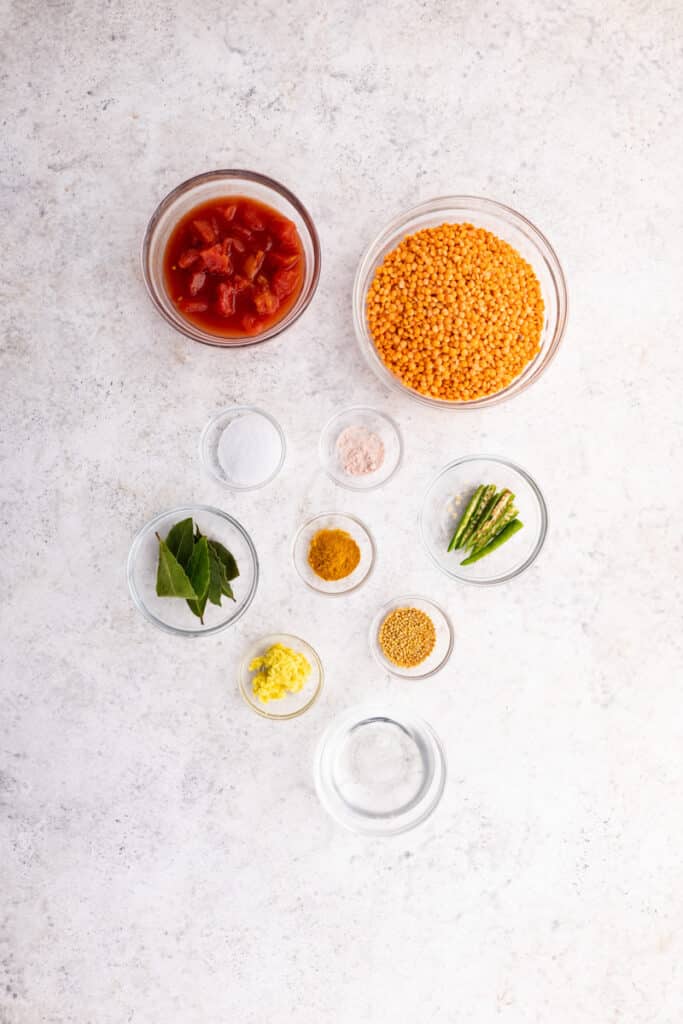
Ingredients and Notes
- Masoor Dal: I love split dried red lentils here for the soft, comforting texture.
- Turmeric Powder: called “yellow powder” by Amma, this dried, ground anti-inflammatory root is added directly to the cooking water where it blooms and turns the liquid a beautiful golden.
- Cooking oil: I prefer avocado oil as a high-heat cooking oil with a heart-healthy nutrition profile that rivals olive oil (which you cannot use for this, because it has a low smoke point). You may alternatively use coconut oil (common in South India) or ghee (this clarified butter adds a toasty, golden buttery flavour).
- Mustard seeds: I could write a love song for these little seeds. When added to hot oil, they sputter and pop and turn into these nutty, aromatic little toasty bits that flavour the whole pot of masoor dal. Feel free to substitute a teaspoon of cumin seeds. The flavour will be a little different, but still delicious (and this is a common variation).
- Curry leaves: these provide a nutty, toasty, and uniquely aromatic flavour here and are very hard to substitute (although Thai basil has a surprisingly similar flavour profile). It’s best if you can find fresh curry leaves but dried curry leaves will do. I buy them at an Indian grocer but I’ve seen them at other Asian grocery stores and sometimes at the supermarket with the plastic clamshell boxes of herbs in produce. Their flavour is irreplaceable in this dish.
- Fresh Ginger: in this recipe, ginger provides beautiful flavour and also a warming heat. If fresh ginger isn’t a staple for you, buy some and keep it in the freezer so you always have it when you need it! I don’t even peel it, just freeze it and grate it off from frozen as needed.
- Green chilies: splitting the chilies lengthwise and leaving them whole infuses the masoor dal with all the flavour of chilis without all of the heat.
- Tomato: this adds a vibrant flavour to the earthy dal. You can use fresh or canned here (save any leftover canned tomatoes for another purpose, you don’t need much!). Amma says this adds “puli” (my crude spelling of the malayalam word for sour). She uses tomato in place of lemon juice in many recipes to add the same brighness.
I loved the simple ingredient list and how the flavouring is built around mostly fresh ingredients – no need to dig through your pantry for garam masala, red chili powder, or other spices.
Asafetida is an optional add-in, but is authentic and very pronounced and pleasantly pungent in flavour (like onion). I love it. You can snatch some up on Amazon.
You may add a small chopped onion to the hot oil in the beginning (before the seeds) and/or a couple of minced cloves of garlic along with the ginger, if you like (but not needed).
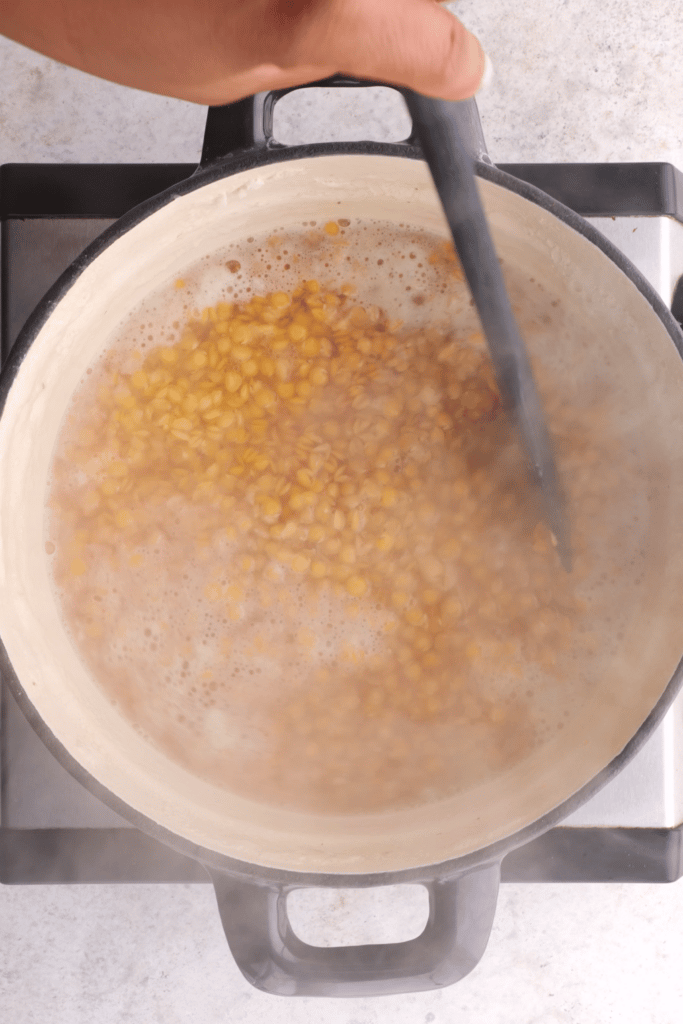
What is Masoor Dal Called in English?
Masoor dal is Hindi for red lentils. Lentil is called “dal” in India.
In an ingredient list, if a recipe calls for “masoor dal“, it is the same as red lentils in the dry pulse form.
Bear in mind, however, the word is also used to refer to the saucy, spiced dish made using red lentils.
Whole Masoor Dal vs. Split Masoor Dal
When a recipe calls for masoor dal (or red lentils), it typically refers specifically to split red lentils.
Whole masoor dal are unhusked and the other coating is more brown in colour.
Once the husk is removed and the lentils are split, the characteristic vibrant red colour (well, orange really) is revealed.
Whole red lentils are not as common in basic North American grocery stores, and they also take much longer to cook. They also will not break down as much as the split variety, yielding a chewier, more textured dish. Whole, however, they offer the added nutrition benefit of the insoluble fibre in the husk.
Grab these Tools
To make this Masoor Dal recipe, you don’t need any fancy gadgets, just a few kitchen essentials:
- Large Saucepan: Grab a big pot, dutch oven or use a pressure cooker to cook the lentils to perfection and achieve their tender texture
- Small Saucepan: For sautéing the dal tadka spice mixture, which will add a depth of flavor to the dish
- Cutting Board and Knife: To chop the tomatoes, ginger, and chili peppers
- Wooden Spoon or Spatula: To stir the lentils while cooking and to mix in the spice mixture for extra flavor
- Measuring Spoons: To measure out the perfect amount of spices, ensuring that the dish is balanced and delicious
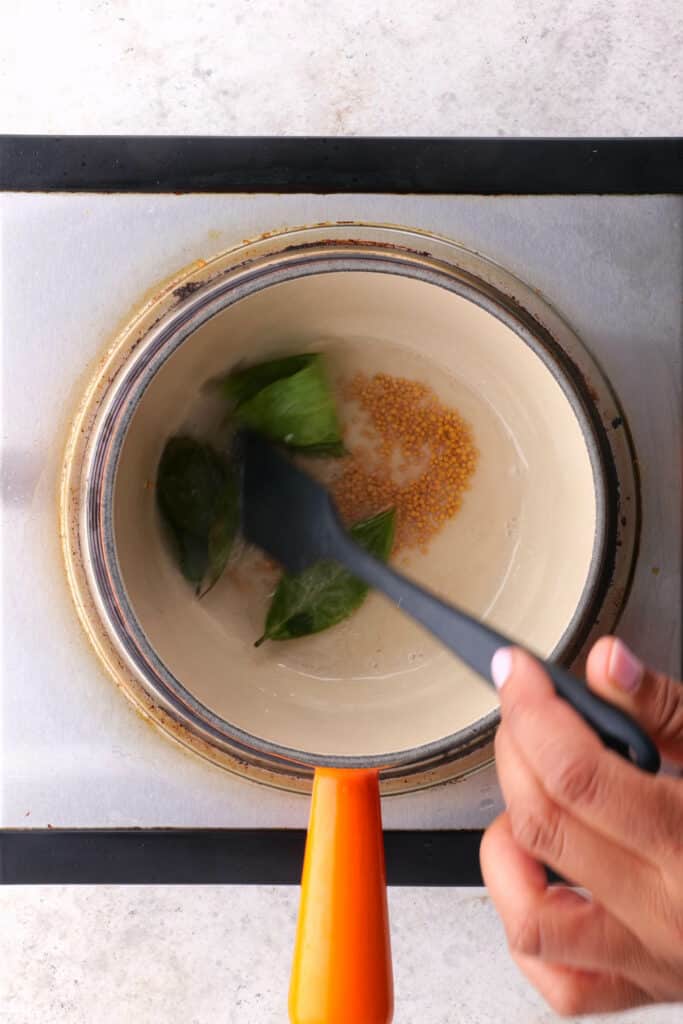
How to Make Masoor Dal with Tadka
Essentially, there are 3 steps:
- Cook the red lentils. Boil the red lentils/masoor dal on their own in water until soft.
- Make the tadka. Sometimes spelled tadka, this is a preparation of aromatics fried quickly in hot oil. In this case, the tarka includes mustard seeds, curry leaves, ginger, chiles, and tomatoes.
- Temper the masoor dal. Scrape the flavourful tadka (including the delicious spiced oil – it’s the only oil in the recipe) directly into the cooked lentils and stir it through. This step is called tempering.
I was skeptical at first about this method – I mean, I’m used to flavour building in layers.
But this is an incredible, tried-and-true Indian cooking technique.
The tadka that is stirred into the dish at the last minute provides a massive flavour punch that seasons the entire pot of masoor dal. It feels like a magic trick.
Once you’ve added the spiced oil and aromatics to the dish, simmer the masoor dal on the stove until you reach the desired consistency (a longer simmer results in a thicker texture).
Instant Pot Method
This is how to cook red lentils in a pressure cooker/instant pot if you prefer it to using the stovetop:
- Use the same quantities of water and lentils (5 cups water to 1 1/2 cups dried lentils)
- Seal the lid and pressure cook on high. Set the timer for 5 minutes. (Or wait for it to whistle 4 times if using a stovetop pressure cooker)
- Use the quick release method to let the steam out.
- Stir the tadka right into the pressure cooker and then leave it on saute or reduce function until it reaches the desired consistency.
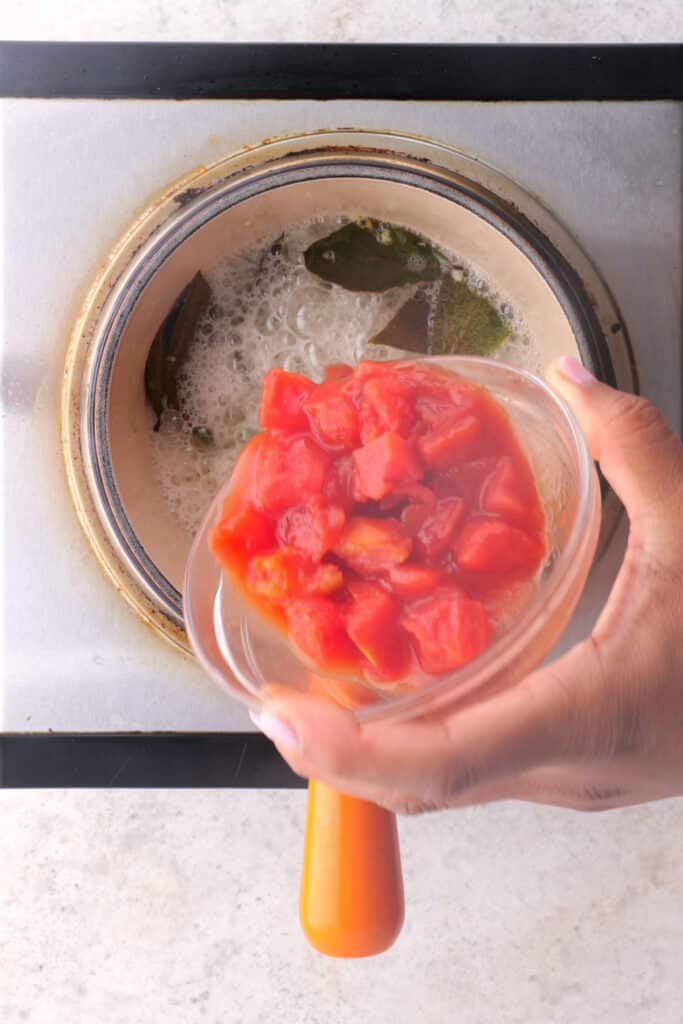
How to Serve it
This is an easy and delicious, cozy and healthy lunch or dinner. Here’s how to enjoy it:
- Garnish it with fresh cilantro (coriander leaves) if you like.
- Add some achaar. My Indian husband loves to eat it with spicy mango pickle.
- Some crispy papads are delicious with it, too.
- Experiment with toppings: Add a dollop of yogurt, a sprinkle of chopped cilantro, or some crispy fried onions on top of your dal for extra flavor and texture.
- Although this is a mild lentil curry, I serve it with plain yogurt for the kids to cut through any heat. They absolutely inhale it.
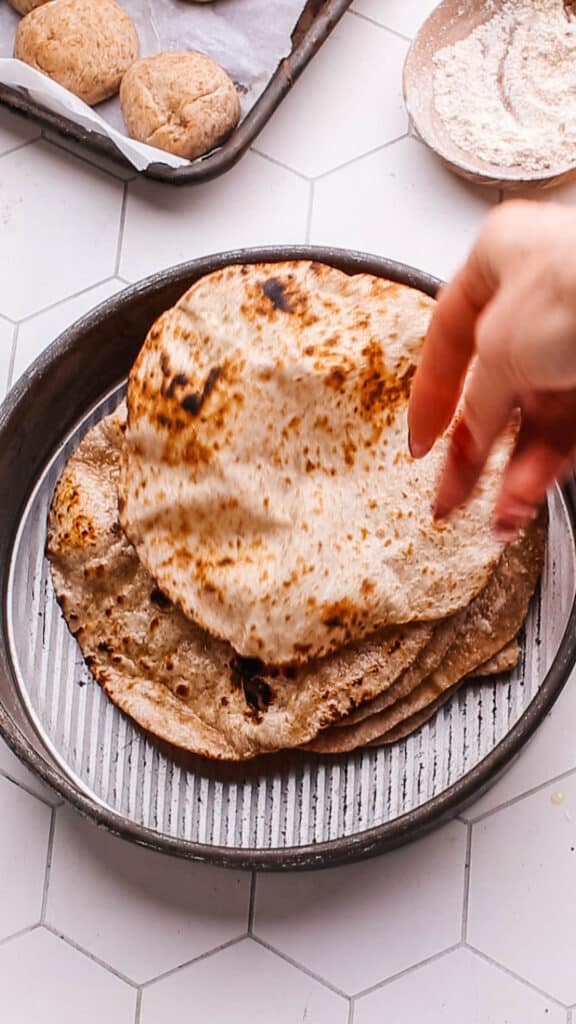
Choose the Perfect Side Dishes
Here are some ideas to take your red lentil dahl meal to the next level:
- Basmati Rice: A classic and simple pairing that will help soak up all the delicious masala flavors. Steal my mother-in-law’s instagram-viral rice-cooking method.
- Naan: Soft and pillowy homemade naan (using my viral recipe!), chapati, roti, or paratha are great accompaniments for sopping up the creamy lentil and spice mixture
- Raita: This refreshing yogurt-based cucumber salad dish is cool and creamy and provides the perfect contrast to the spiciness of the dal
- Fresh Cucumber and Tomato Salad: A light and refreshing side dish that adds a pleasant crunch and freshness to the meal
- Cooked Vegetables: another vegetable such as aloo masala, cauliflower, air fryer eggplant, or okra, provide a wonderful textural contrast to the lentils
- Don’t forget the Mango Kulfi or homemade Gulab Jamun for dessert.
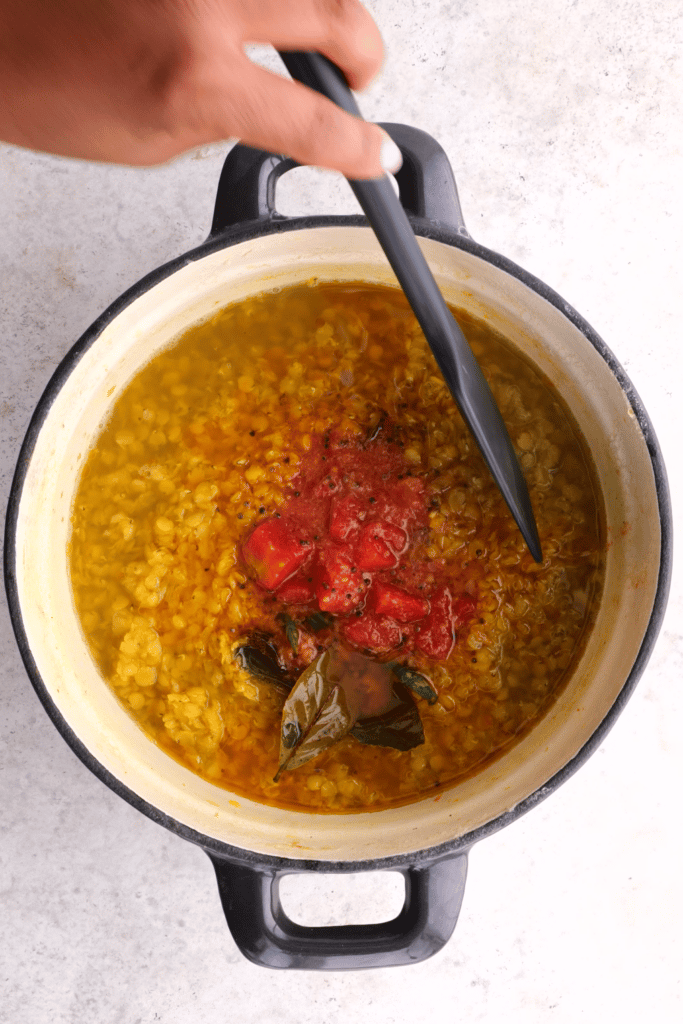
FAQs
Yes, masoor dal is the same as red lentils. In India, it is commonly referred to as masoor dal, but in other countries, it may be labeled as red lentils. So if you come across a red lentil recipe, it can be easily substituted with masoor dal without affecting the recipe’s flavor or texture.
Masoor dal can refer to both red lentils and a type of curry made from red lentils.
In Hindi and other Indian languages, the term dal refers to split and/or husked pulses, including lentils, peas, and beans. However, dal is also used to refer to the dish made by cooking lentils or other pulses with spices, vegetables, and herbs, which is commonly eaten with rice or bread in Indian cuisine.
Split red lentils are made by splitting the whole red lentil in half. They cook more quickly than whole lentils and have a smooth texture when cooked. They are often used in Indian cooking, particularly in dals, spiced lentil soups that are a staple of Indian cuisine.<sup>[1]</sup>
Whole red lentils are left intact and have a firm texture when cooked. They take a bit longer to cook compared to split lentils. When cooked, they retain their shape and don’t turn mushy, making them a great option for salads and stews. Whole red lentils are also rich in fiber and protein and are often used in vegetarian and vegan cooking.
In general, split red lentils are preferred for Indian-style curries and soups, while whole lentils are often used in dishes like salads or stews where the lentils can retain their shape and texture, but they can be used interchangeably (paying attention the the longer cooking time of the whole red lentils).
Curry leaves are a staple ingredient in Indian cuisine and add a unique flavor and aroma to dishes. If you can’t find fresh curry leaves at your local grocery store or market, I recommend using dried. But there are some substitutes you can use:
Bay leaves: These have a similar earthy and slightly bitter flavor to curry leaves. Use 1 or 2 bay leaves in place of 5-6 curry leaves.
Thai Basil leaves: While basil leaves do not have the exact same flavor as curry leaves, the Thai ones have a surprisingly similar herby flavor. Use a small handful of fresh Thai basil leaves instead of curry leaves.
Yes, Masoor dal is healthy. It is such a wonderfully-nutritious vegetarian lentil curry. These are the key benefits:
Protein: plant-based, vegetarian/vegan protein I might add.
Iron: the vitamin C in the tomatoes helps you absorb even more of it.
Fibre: the kind of soluble fibre found in masoor dal is great for gut health and lowering cholesterol
Vitamins, minerals and potassium
Pair Masoor Dal with whole wheat chapati or brown rice for a super-satisfying, filling and nutritious meal.
Make Ahead and Storage Tips
Making Masoor Dal is not only convenient and easy but also perfect for meal prepping for healthy lunch or dinner all week. Here are some tips to help you make the most of this dish:
- Make ahead: Save time by cooking your red lentil dahl in advance. Store it in an airtight container in the refrigerator for up to five days. Simply heat the portion you need when you’re ready to eat (don’t reheat and re-chill the whole pot). Reheat on the stove with a splash of water or broth for a delicious and comforting meal.
- Freeze for later: You can freeze Masoor Dal for up to three months. Allow it to cool completely and store it in an airtight container in the freezer. Just reheat on the stove when you’re ready to enjoy it again.
Other Popular Indian Recipes You Don’t Want to Miss
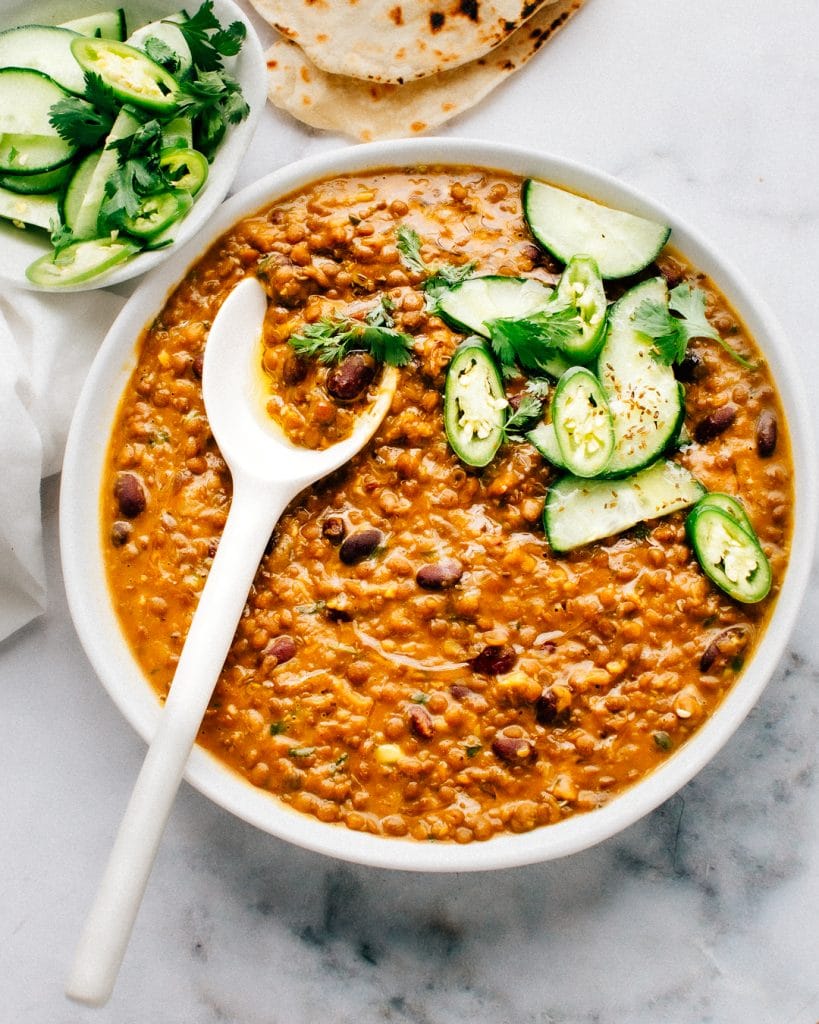
Adarsh’s Vegetarian favorites:
- Madras Lentils with cream sauce
- Curried Lentils with Coconut Milk
- Our family’s favorite Indian Chickpea Curry Recipe
- Saag Paneer
- Aloo Gobi
- Potato Curry
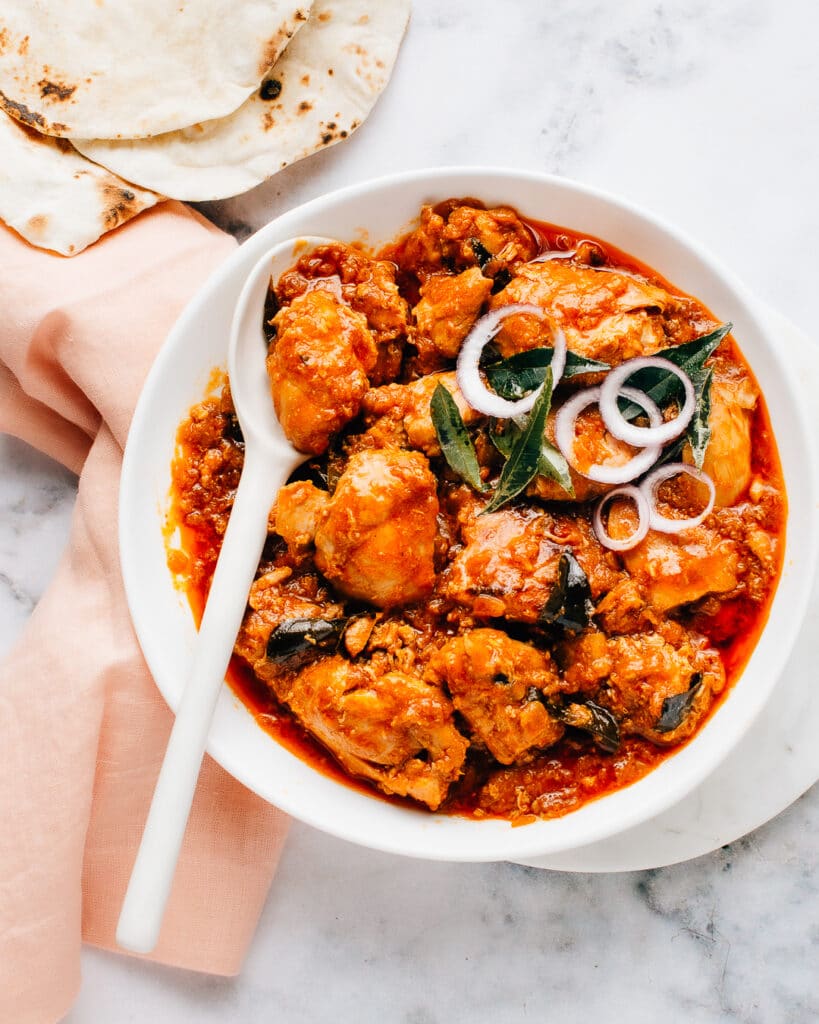
Adarsh’s South Indian favorites:
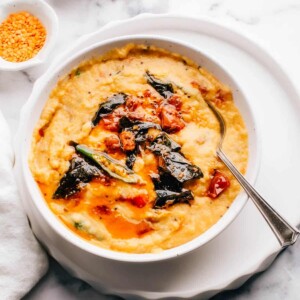
Masoor Dal Recipe (Indian Red Lentil Curry)
Ingredients
- 1 ½ cups red lentils uncooked
- 2 tsp salt plus more to taste, see notes
- ½ tsp turmeric
- ¼ cup avocado oil see notes for substitutes
- ⅛ tsp asaofetida
- 1 tsp mustard seeds
- ¼ cup loosely packed curry leaves
- 1 tbsp ginger minced
- 2-3 thai green chiles split lengthwise (3 can be quite hot)
- ½ cup diced tomato fresh or canned
Instructions
- Rinse lentils and bring to a boil over high heat with 5 cups of water, salt and turmeric. Reduce heat and simmer, mostly covered but with the lid cracked. Cook, stirring occasionally, for 30-40 minutes, until very soft. Add more water if at any point lentils stick to the bottom of the pot. Stir in turmeric.
- Place oil in a small saucepan over medium heat. When shimmering hot, sprinkle asafoetida (if using) over the oil, then add the mustard seeds and curry leaves.
- As soon as the first mustard seeds pop, reduce heat to low and stir in the ginger and chiles. Fry for about 15 seconds, then carefully add the tomatoes.
- Pour the hot oil mixture into the cooked lentils (oil and all). Use caution, it will sputter.Taste and add more salt if needed (I add up to an extra 1/2 tsp depending on how much water evaporated – see notes).
Video
Notes
- The amount of salt needed will vary, depending on how much water evaporated. I used 2 1/2 tsp kosher salt and it was perfect, but start with less (especially if using fine table salt) and add more to taste.
- This amount of water yields quite soupy lentils. You could actually eat it as a soup, if you like. If you prefer it thicker and more curry-like, cook the lentils in 3 cups of water instead, adding more as needed while they cook. If you do this, start with 1 tsp salt and work your way up.
- I prefer avocado oil as what I believe to be the healthiest high-heat cooking oil (I’m a registered dietitian – I’ve done my research). You may alternatively use coconut oil (common in South India) or ghee (this clarified butter adds a toasty, golden buttery flavour).
Nutrition
Nutrition information is automatically calculated, so should only be used as an approximation.
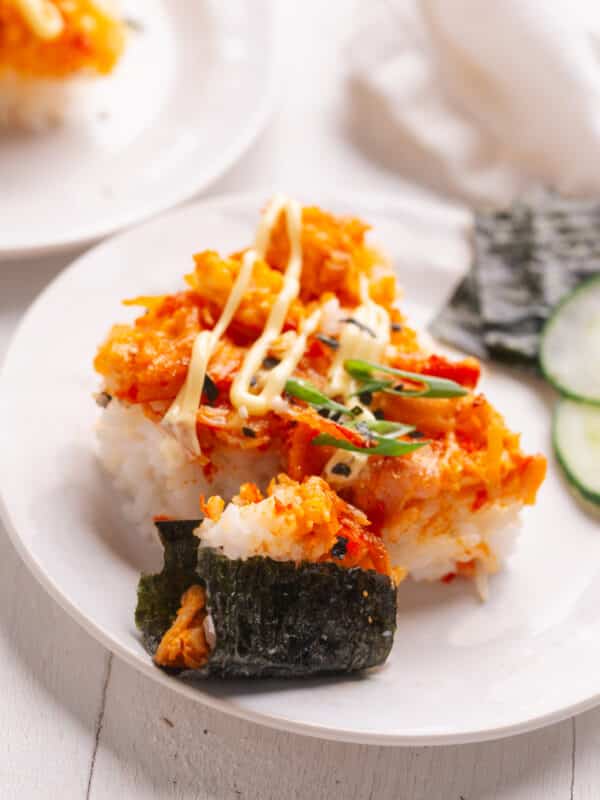
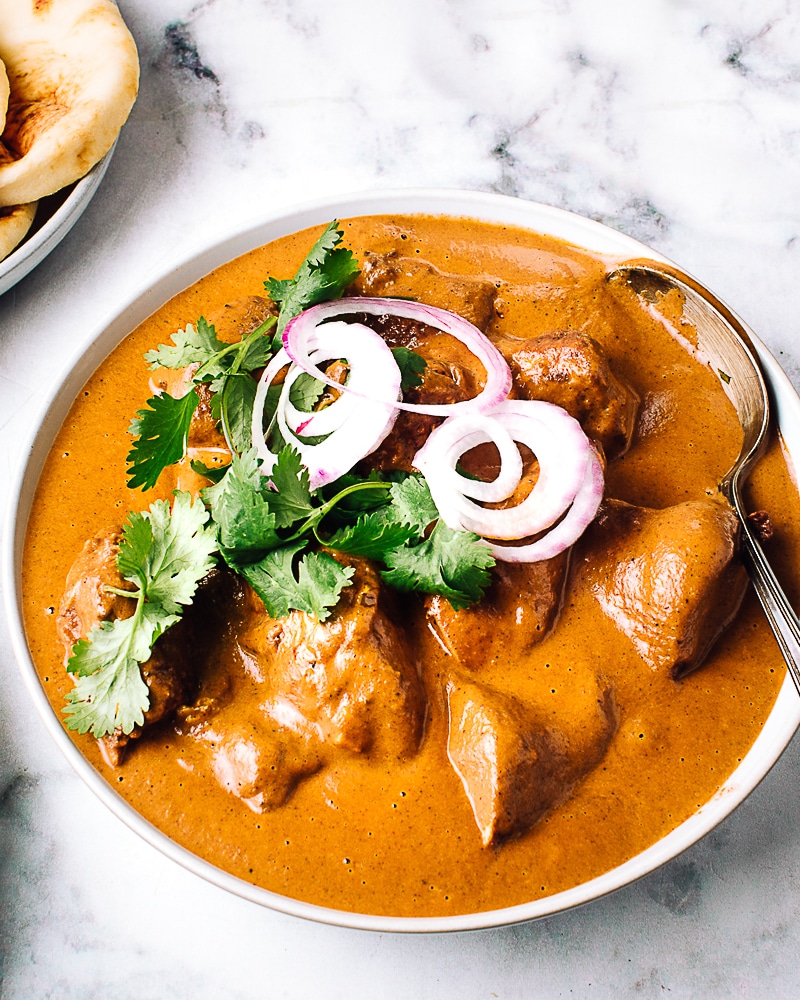
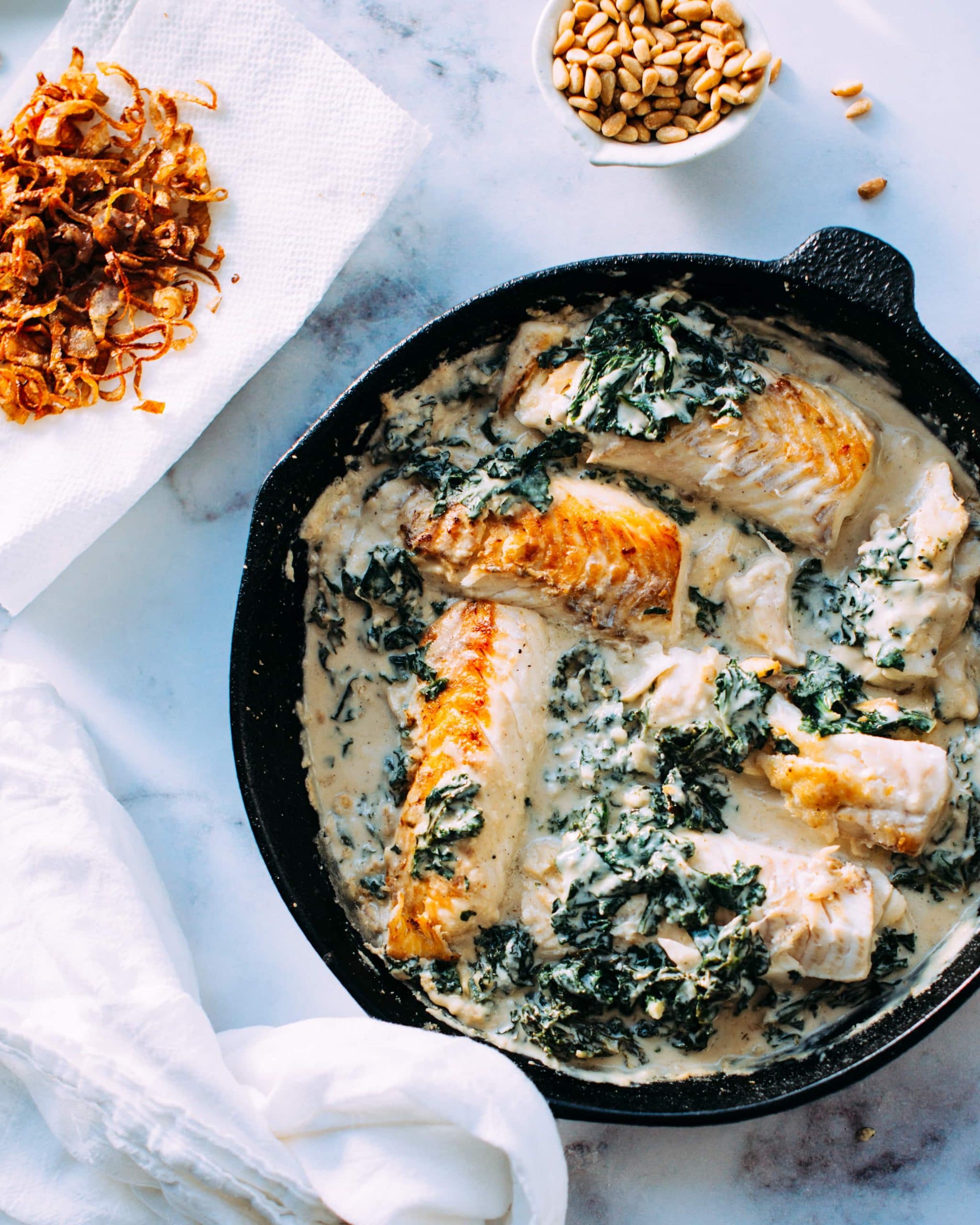
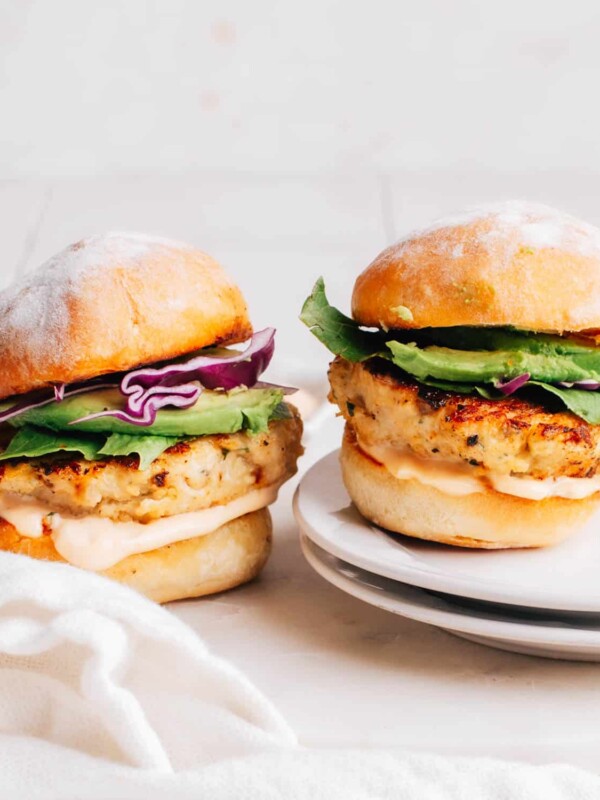









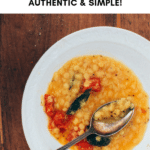

Thanks for the recipe! I tried to recreate it today, but discovered that your recipe doesn’t mention when the turmeric is added in the process! Does it go into the daal at the end, or is it added to the spices in the tadka stage?
Made this tonight and it really is the perfect salad. Love the late summer combo of apple, walnuts, raisins, tomato and fresh herbs. It’s light yet substantial, and the dressing is perfect. Several of your recipes have become ‘go to’ ones for me and I think this just became another one 🙂
Thanks, Lynne! 🙂 Great to hear!
Made this tonight and it really is the perfect salad. Love the late summer combo of apple, walnuts, raisins, tomato and fresh herbs. It’s light yet substantial, and the dressing is perfect. Several of your recipes have become ‘go to’ ones for me and I think this just became another one 🙂
Thanks, Lynne! 🙂 Great to hear!
Thanks for the recipe! I tried to recreate it today, but discovered that your recipe doesn’t mention when the turmeric is added in the process! Does it go into the daal at the end, or is it added to the spices in the tadka stage?
Look at ##1. You will find the answer.
Made this tonight and it really is the perfect salad. Love the late summer combo of apple, walnuts, raisins, tomato and fresh herbs. It’s light yet substantial, and the dressing is perfect. Several of your recipes have become ‘go to’ ones for me and I think this just became another one 🙂
Thanks, Lynne! 🙂 Great to hear!
Made this tonight and it really is the perfect salad. Love the late summer combo of apple, walnuts, raisins, tomato and fresh herbs. It’s light yet substantial, and the dressing is perfect. Several of your recipes have become ‘go to’ ones for me and I think this just became another one 🙂
Thanks, Lynne! 🙂 Great to hear!
Thanks for the recipe! I tried to recreate it today, but discovered that your recipe doesn’t mention when the turmeric is added in the process! Does it go into the daal at the end, or is it added to the spices in the tadka stage?
Made this tonight and it really is the perfect salad. Love the late summer combo of apple, walnuts, raisins, tomato and fresh herbs. It’s light yet substantial, and the dressing is perfect. Several of your recipes have become ‘go to’ ones for me and I think this just became another one 🙂
Thanks, Lynne! 🙂 Great to hear!
Made this tonight and it really is the perfect salad. Love the late summer combo of apple, walnuts, raisins, tomato and fresh herbs. It’s light yet substantial, and the dressing is perfect. Several of your recipes have become ‘go to’ ones for me and I think this just became another one 🙂
Thanks, Lynne! 🙂 Great to hear!
Made this tonight and it really is the perfect salad. Love the late summer combo of apple, walnuts, raisins, tomato and fresh herbs. It’s light yet substantial, and the dressing is perfect. Several of your recipes have become ‘go to’ ones for me and I think this just became another one 🙂
Thanks, Lynne! 🙂 Great to hear!